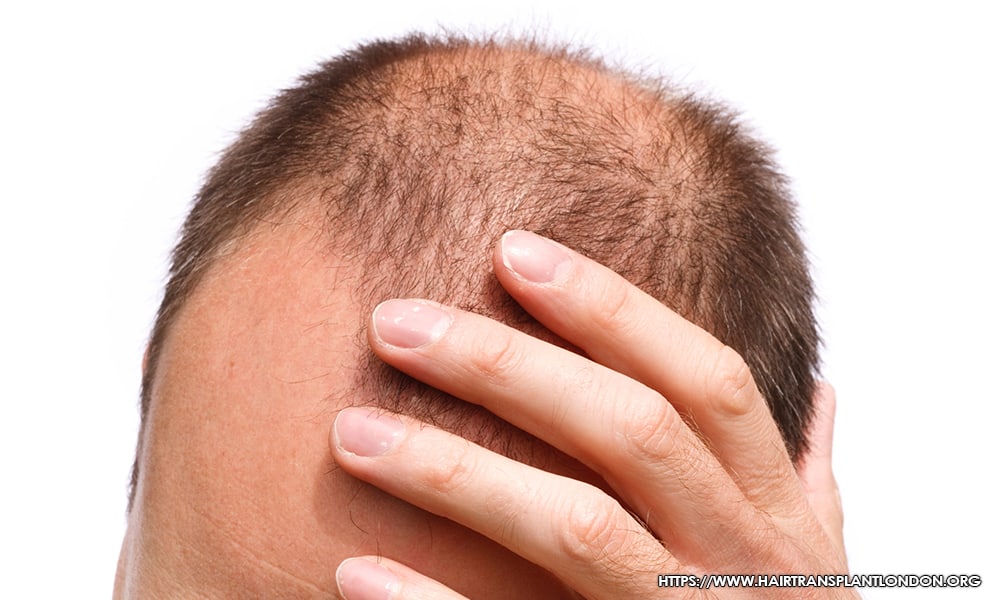What is Male Pattern Baldness?
 Male Pattern Baldness or androgenetic alopecia is the primary explanation that people feel their hair falling out. It is a genetic disease that slowly impacts much of the male population by the age of fifty. More precisely, by 21 years of age, a small number of men have thinning hair, and by 35, 75% of all men experience hair loss to some degree.
Male Pattern Baldness or androgenetic alopecia is the primary explanation that people feel their hair falling out. It is a genetic disease that slowly impacts much of the male population by the age of fifty. More precisely, by 21 years of age, a small number of men have thinning hair, and by 35, 75% of all men experience hair loss to some degree.
Male Pattern Baldness is a genetic disorder linked to dihydrotestosterone (DHT), a testosterone compound that is a male sex hormone. When men get older, the hair follicles on some areas of their bodies, which are more prone to DHT, tend to diminish. The effect is darker hair or the loss of hair in these regions.
Given the fact that male pattern baldness is a disorder that simply happens among most people and does not impact men’s bodies physically in any other way, it can adversely affect their self-esteem and thus cause stress and depression.
Treatment options available
Thankfully, over the last decade, medicine has discovered ways to cure or at least postpone the disease. Hair reconstruction can be accomplished with varied effectiveness with the application of medications (Finasteride, Minoxidil) and Pyramid Air Implants. Both therapies work with male baldness trends in slightly different ways. Therefore, if you are undergoing care, you will be well conscious of what each of them will do for you and what the advantages and pitfalls are with both of them.
Minoxidil is a less severe treatment for male hair loss. It is a solution added directly to the scalp that slows the hair down. Minoxidil does not affect DHT, which is responsible for hair loss and thus does not have permanent effects.
It does, however, have some unexpected side effects. It can be as mild as scalp scratching, flaking and discomfort to more serious, such as weight gain, rapid breathing, chest pain, and light-headedness.
Click Here to receive up to £2000 off Your Hair Transplant Procedure
Hair Transplant Methods
A more advanced approach to recover hair is with the use of hair implants. Such implants are typically hair plugs from areas where hair tends to develop (currently referred to as the “donor region” located along the side of the head) transplanted to regions caused by male pattern baldness. This medication is more costly than the medications mentioned above.
Negative side effects depend on the method of therapy (FUT, FUE, DHI) but we prefer the FUE technique because it is the most effective and the outcomes are shown to be both lasting and esthetically pleasing.
Some type of hair implants are made from plastic fibers, but doctors do not support them as much as transplants, since the risk of infection is higher. Many people like them, though, as they are cheaper.
Ultimately, hair sewing on bald areas is not advised by physicians, as it does not provide a clear solution to the issue and, additionally, it irritates the skin and induces wounds and infections in extreme situations.
We usually agree that consulting with a specialist is better if you are trying to move down the road of taking the hair loss medications listed above. If you would like a free consultation with a hair transplant specialist, just click on the button and fill in the form given.
